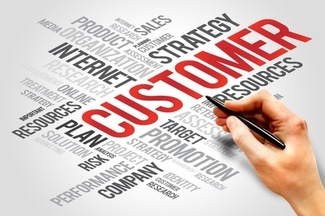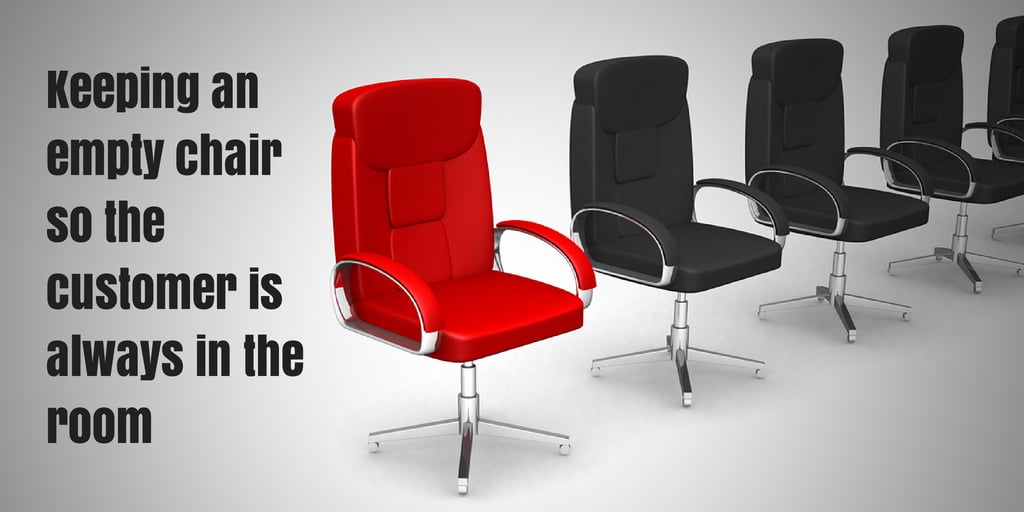Are You Building the Right Products?
As agile practitioners we are all familiar with the Agile Manifesto and the positive impact it has had on companies, specifically in Information Technology (IT) departments around the globe. Although the Manifesto has helped us think and work differently and often in more effective and efficient ways, countless organizations continue to build products that customer don’t want or seldom use. I have worked with many companies from start-up’s to Fortune 10 organizations. The recurring question that most have no answer for is “How do we know we are building the right products for our customers?” Peter Drucker, the founder of modern management, once said: “There is nothing so useless as doing something efficiently that which should not be done at all.”
Based on my experience, I typically find IT and Business departments are organized as two separate entities with different reporting structures often working in silos. The relationship between these groups is often strained, contentious or adversarial. Departments are more focused on customer ownership rather than customer delight. The majority of organizations that operate in this manner make product decisions in a vacuum, develop all ideas, exercise product arrogance (individuals convinced they know what’s best for customers) or get caught up in a exhaustive hierarchical product review and approval process. The quote that I like to share with organizations that operate in this manner comes from the late Steve Jobs “I’m as proud of many of the things we haven’t done as the things we have done. Innovation is saying no to a thousand things”.
Based on the product and business success of Apple, Facebook, Amazon and others, traditional product development and “go-to-market” strategies are radically being challenged and changed based on the ground-break work being done by thought leaders such as Eric Ries: “The Lean Startup”, Marty Cagan’s: “Inspired”, Ash Maurya: “Running Lean” and countless others emerging from the start-up community in Silicon Valley, CA.
In the work that we have done with customers we have found that using the “Customer Seat at the Table” metaphor (as depicted in the picture above) is extremely effective at challenging traditional product thinking and mindsets. In all decisions and thought processes we align our thoughts, decisions and actions with a focus on the customer. I literally like to picture ‘Customers’ sitting next to me during every meeting, so that we can get their valuable input, guidance and feedback. Unfortunately, the reality is that we can’t have our customers sitting with us when we make critical product decisions. This metaphor; however, helps us align our organizational design differently and focuses teams to look at daily activities and decisions through the lens of the customer rather than themselves.
Traditional approach to Product Development
I have seen many companies lose time and spend valuable budget dollars attempting to understand their existing and potential market(s), only to produce exhaustive business cases with untested products. These tend to be based more on fiction than fact. Mired in endless analysis paralysis and bureaucracy, they often miss the opportunity to serve their clients developing products and features customers don’t use.
A focus on the “Customer Seat”…
Applying the “Customer Seat at the table” metaphor has been transformative for both my clients and myself. I have found that when cross functional teams come together across the organization that have a relentless focus on solving customer problems and “Jobs to be Done”, organizations will start to realize the impact that they can have for customers.
In order for companies to compete and remain relevant, they must explore new ways to delight and exceed customer expectations. Lets explore some of the latest thought leadership in this area:
Principals and Guidelines
- Get to “market fit” as quickly as possible through customer experimentation in order to learn what to develop or what not to develop.
- Collect unbiased customer feedback from 5 independent customers to determine trends by testing minimal marketable features (that only look and behave like actual products) as quickly as possible.
- Make sure customers find enough value in our products and services to pay for them.
- The more time we invest working on a untested product or service the more emotionally attached we get to it and the less likely we are to abandon it.
- Ensure the products we build are feasible and we can maintain them.
- Don’t build a feature or function without validated customer feedback captured through in person interviews and/or quantitative data.
- Always deliver the minimum viable functions or products to get feedback and embrace a test and learn product development approach backed by strong metrics.
Opportunity Assessment – Companies attempt to validate market demand and determine total market potential and how much of it they might be able to capture. Organizations attempt to identify and assess a real world problem or pain point that enough people are facing that might warrant the discovery of a potential solution. Some of the key tools that teams could leverage to assess opportunities might include:
- Lean Canvas – an interactive lightweight business plan that helps organizations understand the key areas of the opportunity.
- Personas – defines the different archetype of users that would interact and use the product.
- Journey Maps – the empathetic journey that customers go through to interact with a product. How do customers feel about the experience they’re going through? Is it working or not working? At what point in the process do we have opportunities to change?
- Jobs to be Done – used to gain insight into customer’s needs, companies should stop focusing on the product or the customer and instead focus on the underlying process or “job” that customers want your product to do for them.
Solution Discovery – If an opportunity is worth pursuing, companies need to ensure the product really solves the problem in the target market to achieve market fit. The process starts with the customer experience being mapped against potential solutions. After a few potential solutions are identified, the highest value solution(s) are prototyped and tested with customers. The book Sprint: “How to Solve Big Problems and Test New Ideas in Just Five Days” by Jake Knapp and John Zeratsky is an excellent resource on this process.
Organizations that embrace the “Customer Seat at the Table” mindset who are able to leverage the principals, guidelines and techniques discussed will reap the benefits of: speed to market, cost savings through focused product development and customer delight.
References:
- The Lean Startup by Eric Reis
- Running Lean: Iterate from Plan A to a Plan That Works by Ash Maurya
- Inspired: How to Create Products Customers Love by Marty Cagan
- Sprint: How to Solve Big Problems and Test New Ideas in Just Five Days by Jake Knapp and John Zeratsky
By Roger King – Enterprise Business Agility Coach at LPL Financial



Comments